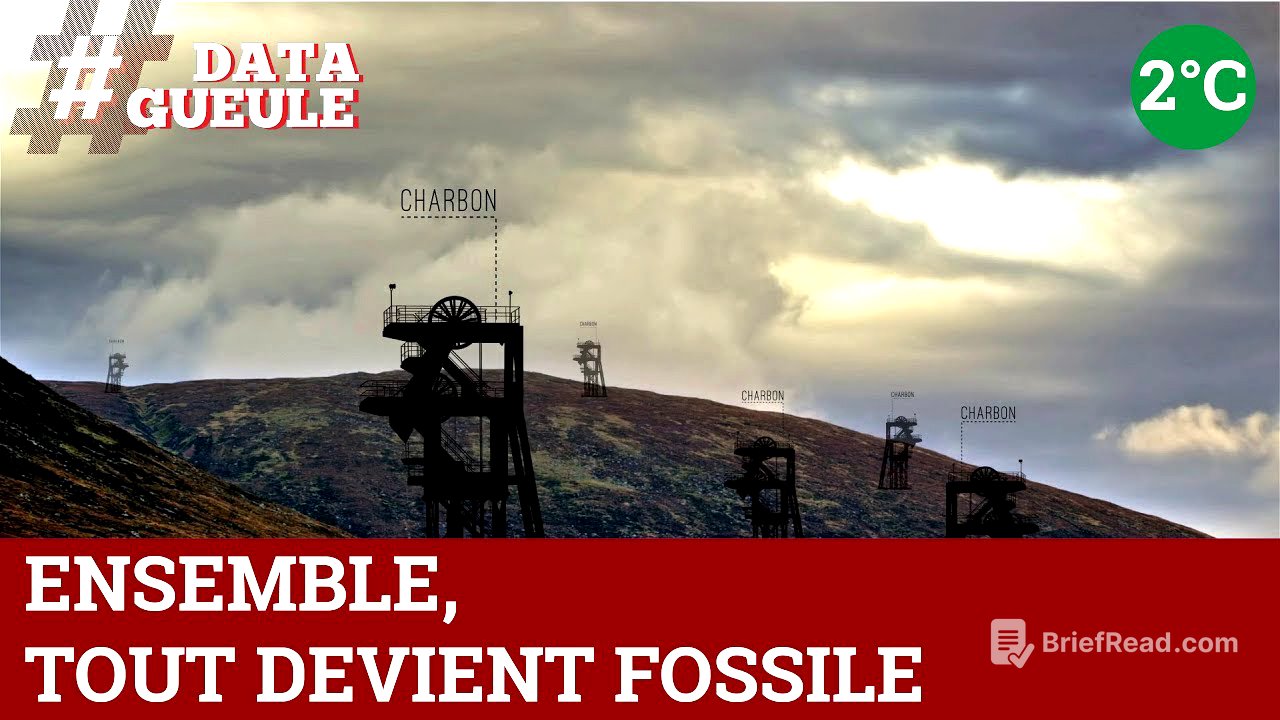TLDR;
This video discusses the history and impact of fossil fuel consumption on the environment. It begins with the advent of coal mining in the 18th century and traces the increasing use of fossil fuels through industrialization, mass consumption, and globalization. The video highlights the role of fossil fuels in various sectors, including agriculture, transportation, and technology, and points out the environmental consequences, such as deforestation, greenhouse gas emissions, and climate change. It also addresses the concentration of emissions among a small number of companies and the pursuit of increasingly difficult-to-reach fossil fuel deposits, including those in the Arctic.
- The industrial revolution was fueled by coal, leading to advancements in steel production, railways, and factories.
- Mass consumption, facilitated by consumer credit, and wartime production significantly increased fossil fuel usage.
- The high-tech industry and modern agriculture, including meat and dairy production, contribute substantially to greenhouse gas emissions.
- A small number of companies are responsible for the majority of greenhouse gas emissions since the industrial revolution.
- The pursuit of new fossil fuel deposits, such as those in the melting Arctic, continues despite the environmental consequences.
The Dawn of Fossil Fuel Extraction [0:00]
For hundreds of millions of years, wood fossilized into coal and microorganisms transformed into gas and oil underground. This natural process remained undisturbed until the advent of mining. In the 18th century, coal was expensive due to underwater mines. In 1712, Thomas Newcomen designed the atmospheric engine, which used coal to pump water out of mines, making coal more accessible and cheaper.
The Rise of Coal and Industrialization [0:51]
With coal becoming more accessible, production in France tripled between 1794 and 1814. Coal facilitated the transformation of iron into steel, leading to the creation of railways. Steam power from locomotives extended to English navy boats, which transported cotton from India to supply new factories. This era saw the decline of hand labor as machines became more productive.
Expansion to Other Fossil Fuels and Industries [1:21]
In the mid-19th century, the U.S. began using high-temperature water to extract sulfur, which enabled the chemical industry to produce industrial fertilizers. This boosted agricultural profits, but today, 80% of deforestation is linked to agriculture, destroying carbon sinks. Factories grew rapidly, producing more than needed, and banks introduced consumer credit in the 1920s to fuel this consumption.
Mass Consumption and Wartime Production [1:58]
By 1926, over 30% of American households owned cars, with two-thirds purchased on credit. World War II further drove overproduction as factories operated at full capacity and armies consumed vast amounts of fossil fuels. Between World War I and World War II, the energy consumption of a regular U.S. soldier increased 228 times. Post-war, the focus shifted to mass consumption to utilize the expanded infrastructure.
Fossil Fuels in Modern Life [2:47]
Modern drilling processes have unlocked torrents of oil and gas, essential for global trade and technology. Container ships, powered by engines that produce enough electricity for a city of 15,000, rely on oil. High-tech usage, such as watching 10 minutes of YouTube, generates CO2 emissions, contributing to the numeric infrastructure producing 2% of global greenhouse gases, equivalent to the emissions from air travel.
Fossil Fuels in Food and Agriculture [3:35]
Fossil fuels are also present in our diets through steaks, burgers, and yogurt. Ruminants and their dairy products produce 5.7 billion tons of CO2 equivalent, with methane from their digestion and pesticides used for their crops being major contributors. Today, over 80% of the world's energy still comes from coal, oil, and gas.
Responsibility and the Pursuit of New Deposits [4:01]
Since the industrial revolution, two-thirds of greenhouse gas emissions have been produced by just 90 companies, primarily oil companies like Chevron, Exxon, BP, and Shell. These fossil fuels offer a dream of cheap, universal comfort, but this hides a dark reality. In 200 years, almost all accessible oil, coal, and gas deposits have been depleted, leading companies to pursue less accessible deposits that require more energy to extract.
The Arctic Opportunity [4:49]
Climate change, caused by greenhouse gas emissions, is creating new opportunities for fossil fuel extraction. The melting Arctic icecap, decreasing at a rate of 13.4% per decade, is revealing 400 hydrocarbon deposits containing around 40 billion barrels of oil and over 30,000 cubic meters of gas.









